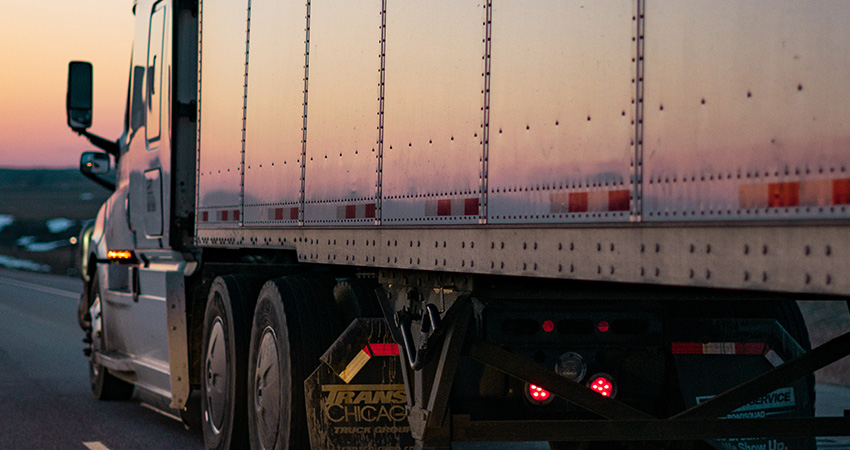Less-than-truckload or LTL shipping has become increasingly popular in recent years, and for good reason. When shipping LTL freight, the shipper pays for the portion of a standard truck trailer their freight occupies, with the rest of the space shared by other companies. This provides many benefits to shippers and carriers, from cost to speed to environmental efficiency.
LTL is a fantastic option for shippers that meet the following criteria:
- Strict budget requirements for product shipment
- Origin to direct-to-consumer shipping
- Product is less than 20 linear feet or 20,000 lbs.
- Operates on a made-to-order model
If you don’t have the internal resources to manage it, LTL shipping is best utilized by partnering with a qualified, experienced 3PL. They will identify when it’s the best option so you don’t have to worry about coordinating with a carrier to get your freight moved.
Here are 4 things a good 3PL partner will look for when it comes to identifying and executing LTL shipping opportunities:
Cost Savings
Since the freight is consolidated with other smaller shipments, the cost of transportation is shared among multiple shippers. This makes it a much more cost-effective option for smaller shipments.
Shippers can save a considerable amount on smaller shipments compared to using full truckload (TL), where you pay for the entire truckload even if you don’t use all the space. LTL carriers also offer competitive pricing because they’re able to optimize routes and minimize empty miles, avoiding transporting an empty truck for part of the journey.
Flexible Shipping Options
LTL shipping offers flexibility. Shippers can choose from a range of delivery options, including next-day, two-day or three-day delivery. It also allows you to choose the shipping option that best suits your needs and budget.
LTL deliveries typically occur in the morning to early afternoon, with new pickups following once the trailer is empty. This is convenient for companies that coordinate their shipping according to their production schedules. With LTL shipping, the need to wait until there is enough freight to fill an entire truck before shipping is eliminated.
This flexibility also means LTL carriers can easily accommodate changing needs. If there is a sudden increase in demand, resulting in a need to ship more frequently, LTL carriers are flexible and can adjust their schedules to accommodate it.
Improved Visibility
LTL shipping utilizes a hub-and-spoke model to consolidate shipments. Shipments are transported to a hub where they are consolidated with other shipments heading in the same direction. Once the truck is full, it is dispatched to its final destination.
With LTL, each shipment is assigned a unique tracking number that allows the load to be tracked from pickup to delivery. This means a shipment’s progress can easily be monitored to ensure it arrives at its destination on time. Working with a 3PL provider that offers LTL technology services gives you a single point of contact for centralized communications and updates.
3PLs can provide real-time updates on shipment location, estimated delivery times and any delays or issues that arise during transit. This information allows you to stay in the know and make informed decisions about shipping strategies.
Increased Sustainability
LTL shipping helps increase sustainability by reducing the environmental impact of transportation. Because LTL carriers consolidate multiple shipments in one trailer, the number of trucks on the road and the amount of fuel consumed is reduced.
LTL carriers also use advanced routing and scheduling technology to optimize delivery routes, further reducing fuel consumption and emissions.
Beyond LTL: Hotshot Shipping
Originating in the 1970s, the term “hotshot” referred to pickup trucks that quickly delivered critical parts to excavation operations. Today, the term has taken on a slightly different meaning in the supply chain.
In hotshot trucking, a service using smaller, specialized vehicles haul small, time-sensitive LTL freight as well as over-length items. For these shipments, the LTL carrier’s accessorial charges are considerably high, making their cost greater than that of a hotshot haul. While most hotshot loads tend to be local deliveries, others may be transported across state lines.
No matter the intended destination, these hot loads must be delivered immediately with zero touchpoints and at a reasonable cost. Finding a 3PL provider that offers wide and flexible LTL options like hotshot shipping is essential to your success and cost savings. Some benefits of using hotshot shipping include:
- Faster transit times than traditional LTL
- Reduced damages from zero handling touchpoints
- Cost savings
Hotshot shipping is a great option for shippers who need their freight moved quickly, and it is also great for high-value shipments thanks to zero touchpoints. Since LTL carriers are beholden to a rule tariff of no more than six skids on a truck at a time or loads exceeding 8 feet, hotshot shipping is a great way to avoid the headache associated with compliance concerns and regulations, all while experiencing dramatic cost savings.
A 3PL provider is essential to help you determine if LTL or hotshot shipping is the best value for your smaller freight shipments. Make sure you find a partner you love to handle the detail work that you don’t!
Dustin Kreigh is Operations Manager for TA Services
